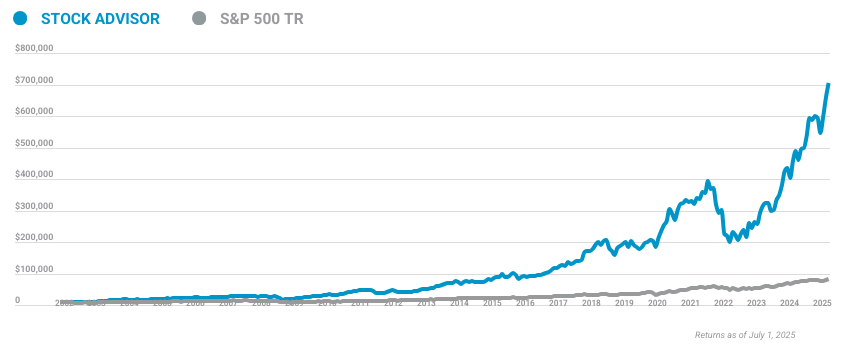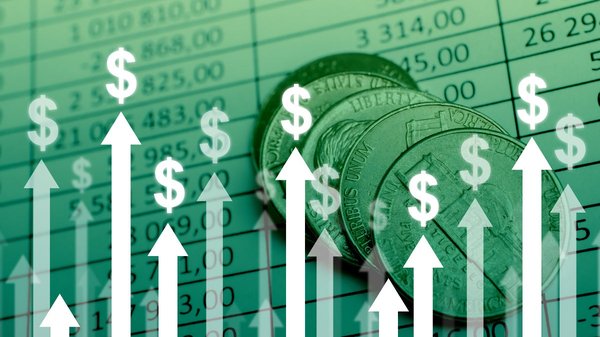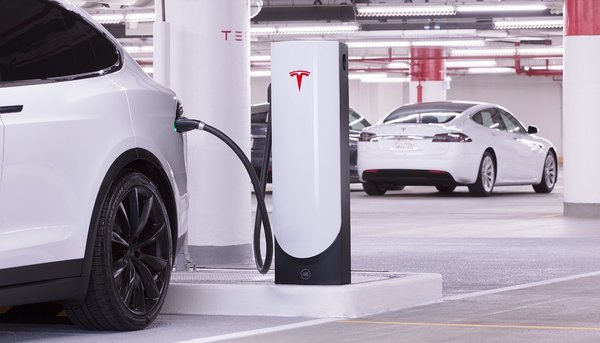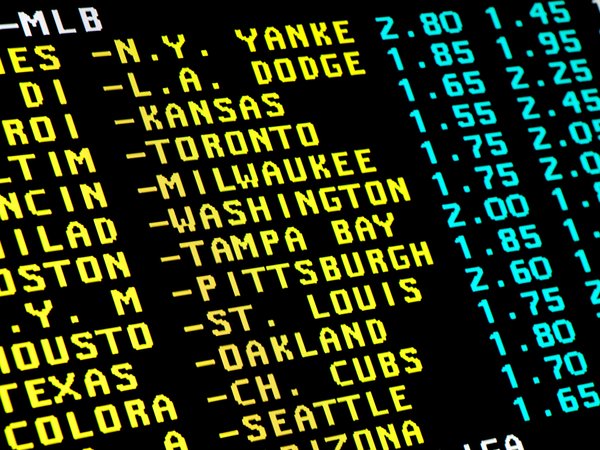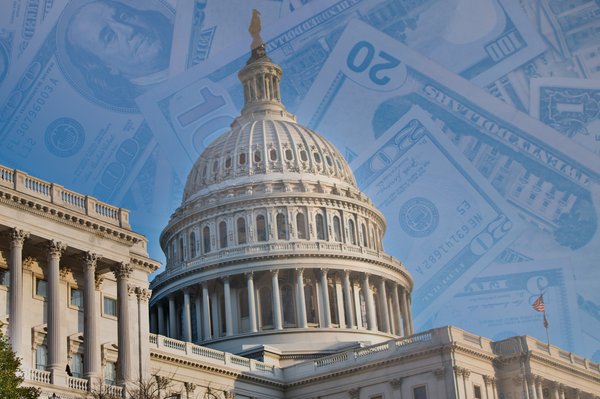Student loan debt totals $1.74 trillion and is held by about 43.5 million Americans, with the average monthly payment amounting to $337.
Those are eye-opening numbers. Student loan debt is consistently the second-largest type of debt behind a mortgage and can be a significant drag on individual finances, particularly for women and people of color.
Moreover, 15% are behind on their student loan payments, which can have a negative impact on credit scores. And more students each year are taking out loans to pay for higher education.

Student loan policy is in flux, with federal loan payments restarting after a multi-year pause during the COVID-19 pandemic and debt forgiveness being sparred over in Washington, D.C.
For more student loan debt statistics, read on.
Key findings
Key findings
- The average federal student loan debt held as of the third quarter of 2023 is $37,645.
- Black Americans hold an average (median) of $26,000 in student loan debt, while white Americans have $25,000.
- Fifteen percent of Americans with student loans are behind on their payments.
- Fifty-seven percent of Americans with student loans would pay down other debts with savings from federal student loan forgiveness.
Total student loan debt
Total student loan debt in 2023: $1.74 trillion
Student loan debt totaled $1.74 trillion as of the third quarter of 2023, per the Federal Reserve.
This includes both federal and private student loans. Federal student loan debt makes up more than 90% of all student loan debt.
Student loan debt by year
In the first quarter of 2006, there was roughly $481 billion in student loan debt. By the middle of 2012, that number had doubled as student loan debt ballooned in the late 2000s and early 2010s.
From 2006 to 2023, student loan debt expanded by $1.3 trillion dollars -- roughly 270%.
Student loan debt has grown by roughly 2% each quarter from 2006 to the start of 2023. Student loan debt declined in the second and third quarters of 2023 -- the first back-to-back decreases since at least 2006.
Average monthly student loan payment: $337
The average monthly student loan payment is $337, based on data the Federal Reserve collected in 2022.
Most Americans with student loan debt make payments between $100 and $400 per month. Fourteen percent make payments between $500 and $999, and 5% are saddled with a monthly student loan bill of more than $1,000. Just 16% pay between $1 and $99 each month toward their student loans.
That means student loan payments represent about 6% of the average American’s monthly expenses -- not an insignificant portion of spending.
Average federal student loan debt
Average federal student loan debt in 2023: $37,645
The average federal student loan debt held by Americans in the third quarter of 2023 was $37,645, based on data from the U.S. Department of Education.
The average level of federal student loan debt has grown by roughly 1% per quarter since 2013.
Average federal student loan debt has decreased in six of the past 11 quarters, peaking at $37,787 in the third quarter of 2022.
Total federal student loan debt in 2023: $1.6 trillion
Total federal student loan debt stands at $1.634 trillion, per the Department of Education.
Federal student loan debt has grown by 1.28% per quarter on average since 2013.
From the second quarter of 2020 through the second quarter of 2023, when the Department of Education eliminated interest and allowed borrowers to pause payments, the average growth rate of federal student loan debt slowed to 0.64% per quarter.
Federal student loan debt peaked in the second quarter of 2023 at $1.64 trillion.
Average federal student loan debt by state
Residents of Washington, D.C., have the highest average federal student loan debt balance, with $53,348 outstanding per borrower.
North Dakota residents have the lowest student loan debt, with $30,000 per borrower on average.
California, Texas, and Florida have the most outstanding federal student loan debt overall, which is no surprise given those are the most populous states and home to the most federal student loan borrowers. California residents owe $149 billion in student loan debt, Texas residents owe $127 billion, and Florida residents owe $105 billion.
North Dakota, Alaska, and Wyoming have the least student loan debt outstanding and have among the fewest borrowers. Student loan debt outstanding in North Dakota amounts to $2.7 billion, $2.4 billion is outstanding in Alaska, and $1.7 billion is outstanding in Wyoming.
| State | Average Balance |
|---|---|
| Alabama | $37,265 |
| Alaska | $34,934 |
| Arizona | $35,430 |
| Arkansas | $33,508 |
| California | $37,384 |
| Colorado | $36,939 |
| Connecticut | $36,055 |
| Delaware | $38,174 |
| District of Columbia | $54,348 |
| Florida | $38,683 |
| Georgia | $41,775 |
| Hawaii | $37,995 |
| Idaho | $33,139 |
| Illinois | $38,349 |
| Indiana | $32,996 |
| Iowa | $30,759 |
| Kansas | $33,128 |
| Kentucky | $33,110 |
| Louisiana | $34,777 |
| Maine | $33,854 |
| Maryland | $43,116 |
| Massachusetts | $34,923 |
| Michigan | $36,406 |
| Minnesota | $33,953 |
| Mississippi | $36,904 |
| Missouri | $35,537 |
| Montana | $33,691 |
| Nebraska | $32,450 |
| Nevada | $33,997 |
| New Hampshire | $34,341 |
| New Jersey | $36,312 |
| New Mexico | $34,022 |
| New York | $37,989 |
| North Carolina | $38,143 |
| North Dakota | $30,000 |
| Ohio | $34,803 |
| Oklahoma | $31,875 |
| Oregon | $37,416 |
| Pennsylvania | $35,772 |
| Puerto Rico | $29,577 |
| Rhode Island | $32,886 |
| South Carolina | $38,360 |
| South Dakota | $31,746 |
| Tennessee | $36,558 |
| Texas | $33,354 |
| Utah | $33,125 |
| Vermont | $38,071 |
| Virginia | $39,599 |
| Washington | $36,176 |
| West Virginia | $32,160 |
| Wisconsin | $32,232 |
| Wyoming | $30,357 |
| Other | $47,414 |
| Not Reported | $25,237 |
Average student loan debt by age
Americans older than 35 have the most student loan debt on average, while Americans 24 and younger have the least.
| 24 and Younger | 25 to 34 | 35 to 49 | 50 to 61 | 62 and Older | Not Reported |
|---|---|---|---|---|---|
| $14,382 | $32,801 | $43,000 | $45,585 | $42,519 | $3,000 |
Those in the 35-to-49 age group have the most student loan debt outstanding, just over $632 billion as of the third quarter of 2023. Of that age group, 15 million have student loans, more than any other group.
Here’s how total outstanding debt and the number of student loan borrowers break down by age group:
- 24 and younger: $98 billion federal student loan debt outstanding among 6.8 million borrowers.
- 25 to 34: $495 billion federal student loan debt outstanding among 15.1 million borrowers.
- 35 to 49: $636.1 billion federal student loan debt outstanding among 14.7 million borrowers.
- 50 to 61: $296.3 billion federal student loan debt outstanding among 6.5 million borrowers.
- 62 and older: $114.8 billion federal student loan debt outstanding among 2.7 million borrowers.
Older Americans have more student loan debt on average than younger Americans because they’re more likely to have taken out additional and more expensive loans for postgraduate education.
Over time, average student loan debt per borrower has steadily increased for Americans older than 35 but has remained relatively stable for younger borrowers.
Federal student loan debt by loan type
There are three types of federal student loans: Direct Loans, for which there is $1.4 trillion in outstanding debt; Federal Family Education Loans (FFEL), for which there is $199 billion in outstanding debt; and Perkins Loans, for which there is $3.8 billion in outstanding debt.
| Time Period | Direct Loans (billions) | Federal Family Education Loans (FFEL) (billions) | Perkins Loans (billions) | Total Outstanding Federal Student Loan Debt (billions) |
|---|---|---|---|---|
| 2023 Q3 | $1,439 | $191 | $3.7 | $1,634 |
Federal Direct Loans are government-funded student loans offered to undergraduates, graduate students, and parents of college students. These loans can be subsidized or unsubsidized, and, of the three categories above, Direct Loans are the only type that still exists.
FFEL loans were once issued under the Federal Family Education Loan program and were private ones subsidized and guaranteed by the federal government. That program ended in 2010. Perkins Loans were government loans that featured a lengthy grace period and a low fixed interest rate, but they stopped being issued in 2017.
Total private student loan debt
Total private student loan debt: $131.1 billion
Total private student loan debt totaled $131.1 billion as of the second quarter of 2021, according to MeasureOne. That accounts for about 7.1% of all outstanding student loan debt.
Private loans don't come with the same protections as federal loans, making it easier for borrowers to fall behind.
Many private lenders will offer to consolidate federal student loans at potentially lower rates. Doing so transfers federal loans into private loans, eliminating protections and making them ineligible for potential federal student loan forgiveness or other types of relief.
Average student loan debt by race
There is an apparent racial disparity when it comes to student loans. Black Americans carry more student loan debt on average, are more likely to have student loans, and are more likely to have student loan debt of more than $25,000 compared to other Americans.
Black Americans also have the most student loan debt, carrying $26,000 on average, according to the Federal Reserve.
White Americans hold $25,000 in student loan debt on average, while Hispanic Americans have $13,000. Other races have an average of $25,000 of student loan debt.
| Black, Non-Hispanic | Hispanic | Other | White, Non-Hispanic |
|---|---|---|---|
| $26,000 | $13,000 | $25,000 | $25,000 |
In addition, a higher percentage of Black Americans have student loans than any other race. Thirty-six percent of Black Americans have student loans compared to 20% of white Americans and 15% of Hispanic Americans.
| Black, Non-Hispanic | Hispanic | Other | White, Non-Hispanic |
|---|---|---|---|
| 36% | 15% | 23% | 20% |
Black Americans are also more likely than other Americans to have at least $25,000 worth of student loan debt. Fifty-seven percent of Black Americans have more than $25,000 in student loan debt compared to 47% of Americans overall.
| Black, Non-Hispanic | Hispanic | Asian | White, Non-Hispanic | All |
|---|---|---|---|---|
| 57% | 39% | 52% | 45% | 47% |
Average student loan debt by gender
Women hold an average of $31,276 in undergraduate student loan debt one year after graduation, while men hold roughly $2,000 less, according to the American Association of University Women.
| Gender | Cumulative Debt on Undergraduate Loans One Year After Graduation | |
|---|---|---|
| Women | $31,276 | |
| Men | $29,270 |
Breaking the numbers down by gender and race puts the wealth divide in even starker terms.
Black or African American women have an average of $41,466 in undergraduate student loan debt one year after graduation, more than any other group and more than $10,000 more than men.
American Indian or Alaska Native women and Pacific Islander/Hawaiian women also have more than $35,000 in student loan debt on average one year after finishing their undergraduate degree.
| Demographic | Cumulative Debt on Undergraduate Loans One Year After Graduation | |
|---|---|---|
| American Indian or Alaska Native women | $36,184 | |
| Asian women | $27,607 | |
| Black or African American women | $41,466 | |
| Hispanic or Latina women | $29,302 | |
| Pacific Islander/Hawaiian women | $38,747 | |
| White women | $33,852 | |
| All women | $31,276 | |
| All Men | $29,270 |
15% of Americans with student loans are behind on their payments
Fifteen percent of Americans with student loans are behind on their payments, putting them at risk of accumulating interest and lowering their credit scores.
Those with lower incomes and less education are more likely to be behind on their payments.
| Family Income | Percent behind on payments |
|---|---|
| <$25,000 | 25% |
| $25,000 to $49,999 | 21% |
| $50,000 to $99,999 | 12% |
| $100,000 or more | 5% |
| Education | Percent behind on payments |
|---|---|
| Some college or technical degree | 28% |
| Associate’s degree | 19% |
| Bachelor's degree | 7% |
| Graduate degree | 6% |
Missing a student loan payment immediately makes the loan delinquent. If the loan remains delinquent for 90 days, the loan servicer will contact major credit bureaus and credit scores may be negatively impacted.
If federal loans go without payment for more than 270 days, the debtor is considered to be in default and can lose eligibility for federal aid and be open to legal action.
57% of Americans would use savings from student loan forgiveness to pay off other debt
With federal student loan forgiveness under active consideration, 57% of Americans say they would use savings from forgiveness to pay off debt.
Twenty-six percent say they would put savings from federal student loan forgiveness toward other savings. Ten percent say they would put savings toward a home purchase, and 7% say they would spend their savings on other things.
Older Americans are more likely to put savings from loan forgiveness toward paying off debt, while younger Americans are more likely to put those savings aside for a home purchase.
| Age | Pay off debt | Save for home purchase | Save for other things | Spend it on other things |
|---|---|---|---|---|
| 18 to 29 | 49% | 19% | 28% | 4% |
| 30 to 44 | 56% | 12% | 25% | 7% |
| 45 to 59 | 67% | 4% | 22% | 8% |
| 60+ | 56% | 4% | 29% | 11% |
| Race/Ethnicity | Pay off debt | Save for home purchase | Save for other things | Spend it on other things |
|---|---|---|---|---|
| White | 56% | 11% | 27% | 8% |
| Black | 62% | 11% | 21% | 6% |
| Hispanic | 54% | 12% | 27% | 6% |
| Asian | 51% | 11% | 29% | 9% |
Is it worth it?
Most Americans say the benefits of higher education outweigh the costs
Slightly more than 50% of Americans who attended college say the financial benefits of doing so outweigh the costs, according to the Federal Reserve. Roughly 20% said the costs were not worth the financial benefits and the other 30% said the costs and benefits are roughly the same.
Views on whether the financial benefits of higher education outweigh the costs vary by education level and age.
Younger and less-educated Americans are less likely to see the financial benefits of attending higher education as greater than the costs.
Still, more than 50% of Americans with a bachelor’s degree or higher consider their education to be worth the cost. The majority of Americans older than 60 with an associate’s degree or higher believe the expense of their education was worth it.
| Level of education | 18 to 29 | 30 to 44 | 45 to 59 | 60+ |
|---|---|---|---|---|
| Associate’s Degree | 33% | 30% | 45% | 55% |
| Bachelor's Degree | 58% | 65% | 65% | 76% |
| Graduate or Professional Degree | 61% | 65% | 79% | 85% |
Americans who are still paying off their student loans are less likely to think the financial benefits of their education has been worth the costs. On the other hand, more than 50% of Americans who have either paid off their student loans or did not have any to begin with think the cost of their education was worth the financial benefits.
A significant disparity exists in whether the cost of education is worth the benefits when grouping Americans by the type of college they attended.
Those who attended a for-profit college are much less likely than Americans who attended a public college or private nonprofit college to think the cost was worth the lifetime financial benefits. Just 31% of those who attended a for-profit college believe the financial benefits were worth the cost, while more than half of those who attended public and private nonprofit colleges see the costs as being worth the financial benefits.
| Loan status | Percent Who Believe the Lifetime Financial Benefits of Their (Current/Most Recent) Educational Program Outweigh its Costs | |
|---|---|---|
| With loans | 43% | |
| Paid off loans or no debt ever | 53% |
| Type of college attended | Percent Who Believe the Lifetime Financial Benefits of Their (Current/Most Recent) Educational Program Outweigh its Costs | |
|---|---|---|
| Public school | 53% | |
| Private nonprofit | 58% | |
| For-profit | 31% |
Loan forgiveness and debt relief
What’s next for student loan forgiveness and debt relief
With few exceptions, Americans with federal student loans saw payments and interest on their loans resume in October. That came after the Supreme Court in June halted a bid from the Biden administration to forgive up to $20,000 of student debt for tens of millions of borrowers.
The payment and interest pause began in March 2020 in response to the COVID-19 pandemic.
Since the Supreme Court’s decision, the administration has canceled billions of dollars worth of student loan debt through other, more targeted means, including for disabled borrowers, those who paid the wrong amounts toward income-driven repayment plans, those whose schools defrauded them, and those who qualified for public service loan forgiveness.
The Biden administration also began a new process to provide student loan forgiveness similar in scope to what it initially attempted under a different law that requires a longer process. This is being done in the hope of dodging another Supreme Court challenge or winning it outright. As of the fall of 2023, that so-called “Plan B” would appear to cover fewer borrowers than the administration’s first plan.
Sources
- American Association of University Women (2021). “Deeper in Debt: 2021 Update.”
- Congressional Research Service (2022).”Federal Student Loan Debt CancellationPolicy Considerations.”
- Department of Education (2023). “Federal Student Loan Portfolio.”
- Federal Reserve (2023). “Economic Well-Being of U.S. Households in 2022.”
- Federal Reserve (2023). “Survey of Consumer Finances.”

